Get the weekly SPARTANAT newsletter.
Your bonus: the free E-Book from SPARTANAT.
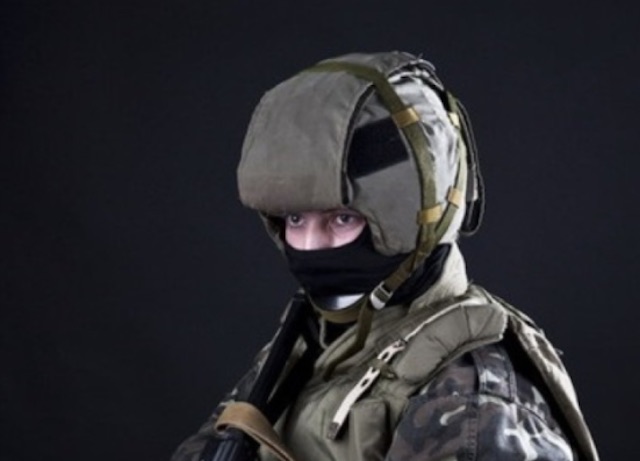
REVIEW: STSh-81 Sphere and SSSh-94 Sphere-C Russian helmets
The STSh-81 Sfera helmet revolutionized helmet design with its three-plate construction for higher protection levels, comfort, and ease of manufacturing. Initially made of titanium, it later shifted to steel for cost-effectiveness and increased weight, impacting wearer comfort.
A helmet is a helmet, right? Just a bowl on your head? There have always been attempts to produce alternatives to common models. In the West, for example, Crye Precision took the path of a two-piece shell plus rails with the AirFrame. In the East, there was an even more radical design: the Sfera helmets consist of three plates. In the late 1980s, the military leadership of the USSR faced the need to equip MVD and army soldiers with new helmets with higher protection levels. An innovative development was required, which should offer better bulletproof properties, as well as a high level of comfort and easier manufacturing possibilities.
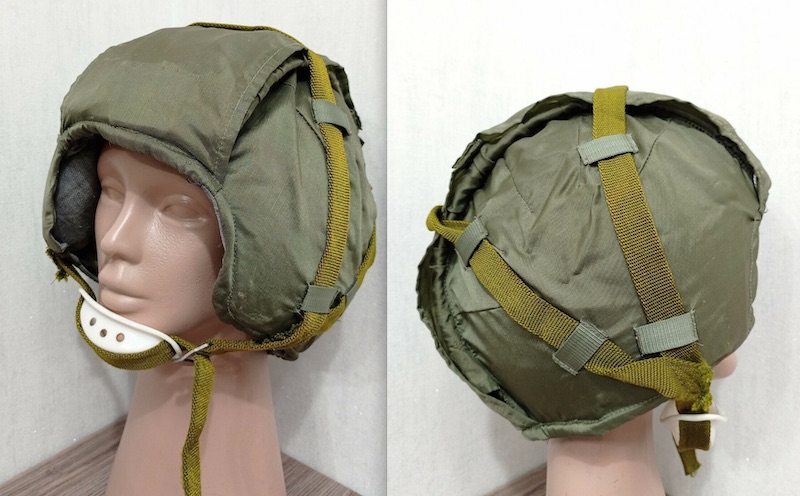
The STSh-81 became exactly such a helmet. The helmet has a complex shape consisting of three separate plates, for which a special cover is used for connection. Like the American AirFrame, the complex-to-manufacture helmet shape is broken down into parts here as well. A pleasant side effect is that if one of the plates is damaged, it is enough to replace only that one and not the entire helmet.

The first model was the titanium helmet "Sfera" STSh-81. It was developed in 1981 by the Institute for Scientific Research for Special Equipment of the Ministry of Internal Affairs of the USSR. The helmet is of the Russian second protection class (against pistols TT, PM, PSM) in accordance with GOST R 50744-95. It consists of three 3mm thick titanium armor elements that fit into the pockets of the fabric cover. Above you see the titanium variant (metal colors) and the successor model with steel plates (green).
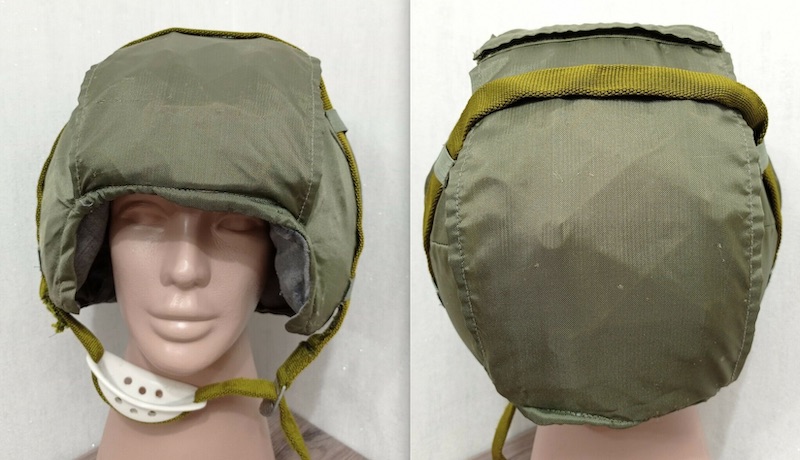
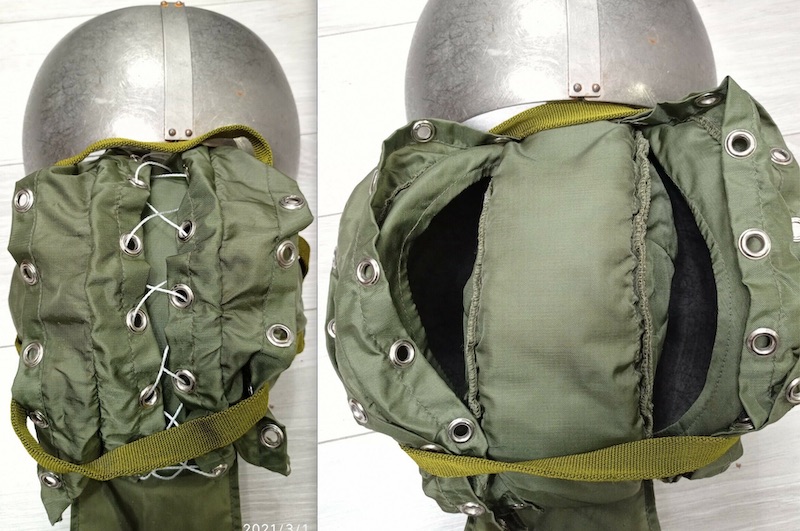
The helmet offers protection for a large area of the head - no wonder: it looks like a mounted ball (check out the in-use photos at the end of the review). The overall design envisions that it can be adjusted to head sizes from 56 to 60 cm via the fabric base.
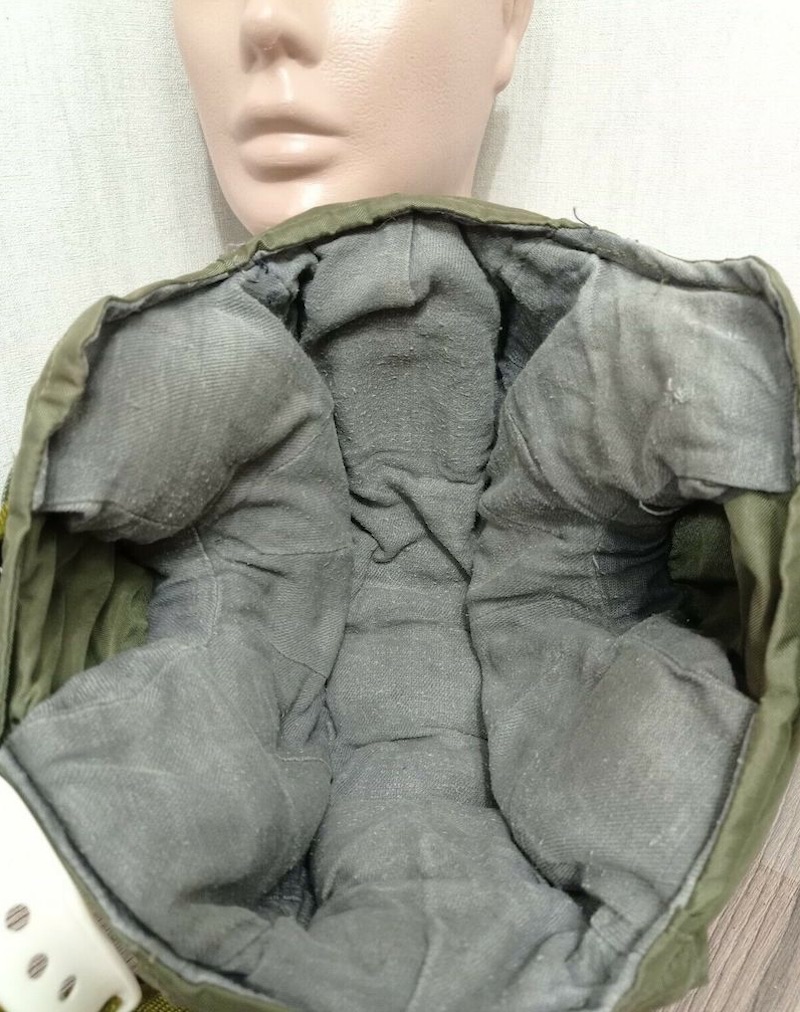
The interior consists of padding with "shock absorbers" made of polyurethane foam to dampen the dynamic impact of bullets and shrapnel hitting the soldier's head, so it's essentially a padded hood with the inserted plates. On the right and left, you can see space, where the soldier's ears go.
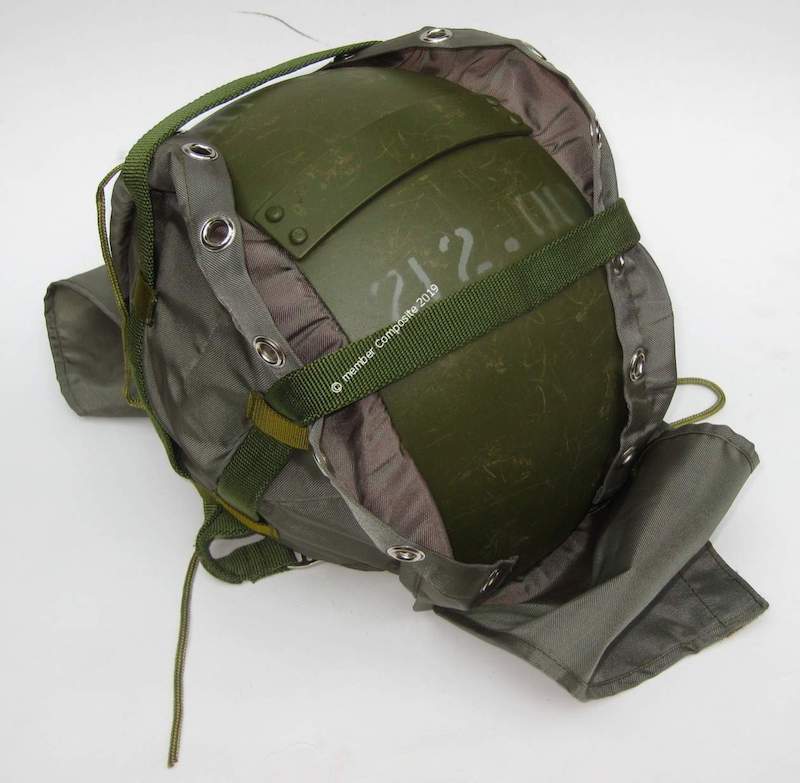
This is how the helmet is assembled. It is fixed to the head with straps and a chin cup. The Sfera helmet is no longer manufactured today, but it is still present as equipment of the Russian Ministry of Internal Affairs. The weight of this version is 2.3 kg. The helmet's service life was rated as low due to the fabric cover wearing out quickly.
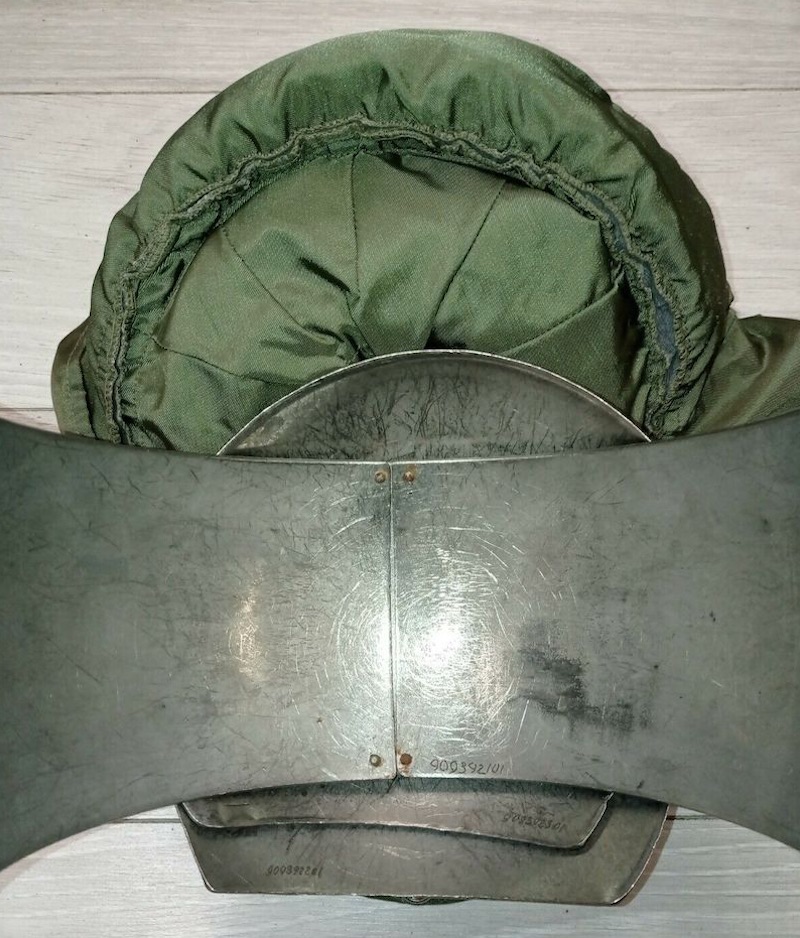
Soon, the STSh-81 Sfera was modernized, and SSSh-94 went into production. Both helmets are indistinguishable in themselves, the general design remained unchanged. The main difference lies in the material, shifting from titanium back to steel.
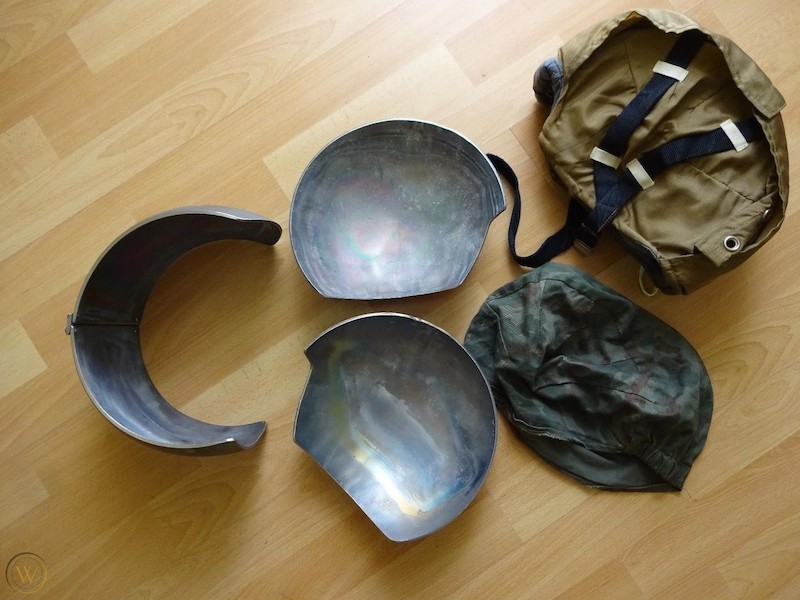
Steel with the necessary thickness is on par with titanium as armor. The steel armor was also less problematic than the titanium armor elements of the STSh-81, as the viscosity of steel is higher than that of titanium. The old titanium helmets Sfera had the issue that if the helmet was penetrated by a projectile that did not kill the fighter, e.g. because it flew tangentially past the skull, it resulted in head injuries with titanium fragments. This means that the main material of the helmet STSh-81 produced life-threatening shrapnel.
The biggest advantage of the "Sfera-S" helmet, which is very important in mass production of products, was the price. The new steel helmets have become much cheaper to manufacture than the old titanium helmets, as steel itself is cheaper than titanium and easier to work with. However, using steel has significantly increased the weight of the helmet again. The Sfera became 1,200 grams heavier. In this case, that is a very large "increase", the mass has increased by more than 30%, making it more strenuous to wear.

The outer covers, both for the STSh-81 and the SSSh-94, can be made in different ways: camouflage in various patterns and single-colored fabric, depending on the task. Here is a helmet with a carrying bag on the right, with different camouflage covers on the left for that purpose.
CONCLUSION: Due to its very special shape, the wearer always looks a bit like from the movie "Spaceballs", but if it looks stupid but it works, then it's not stupid. That describes the Sfera helmet quite well.
STSh-81 Sfera and SSSh-94 Sfera-C Russian helmets can be found at Russian military surplus shops or on Ebay.com. Prices range between 100 dollars (steel version) and 300 dollars (titanium version).
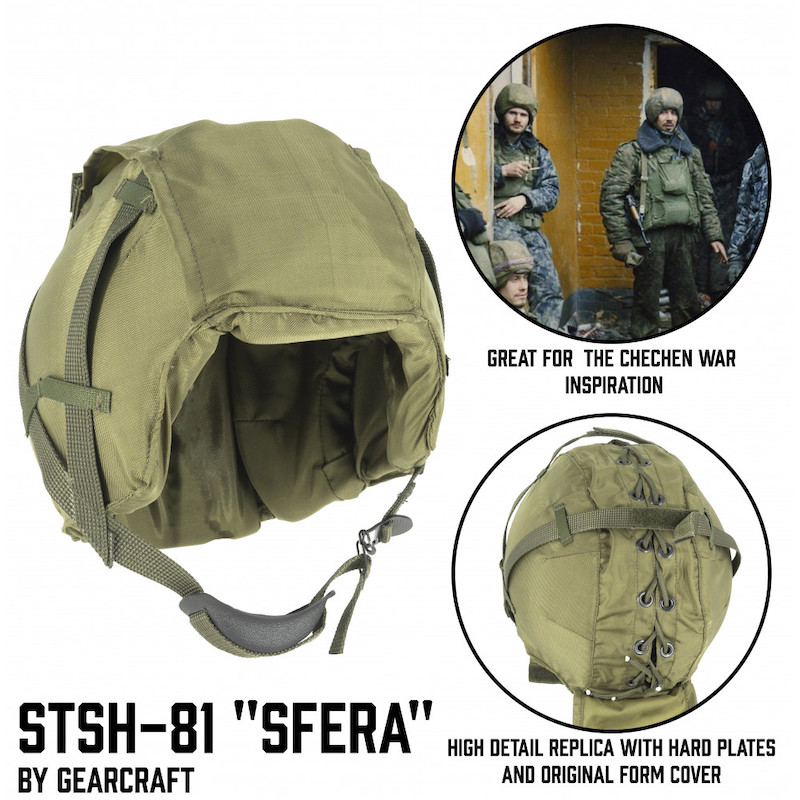
Replica of the helmet (without ballistic function) is available for 78 dollars (excluding taxes and customs) at the GREY SHOP.
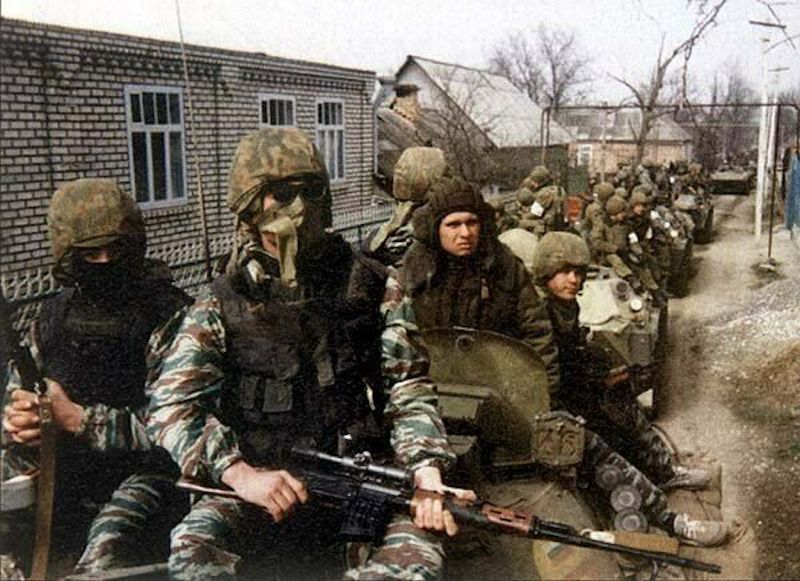
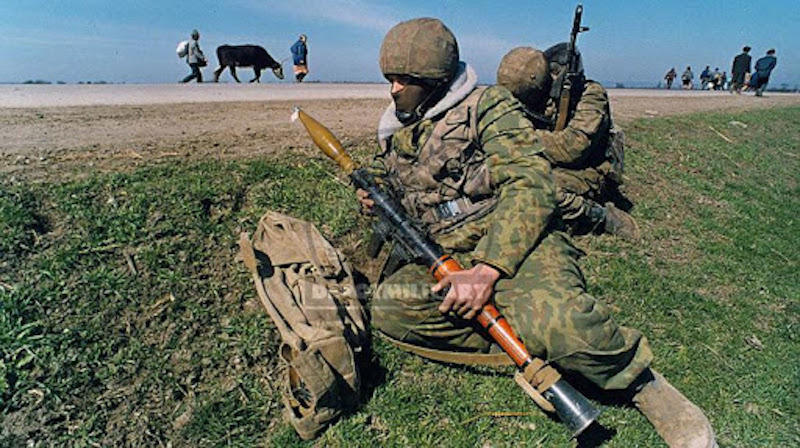
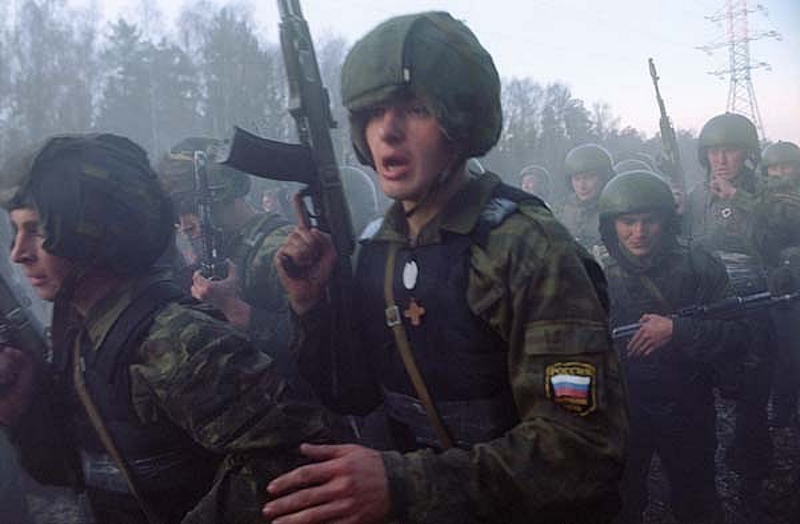
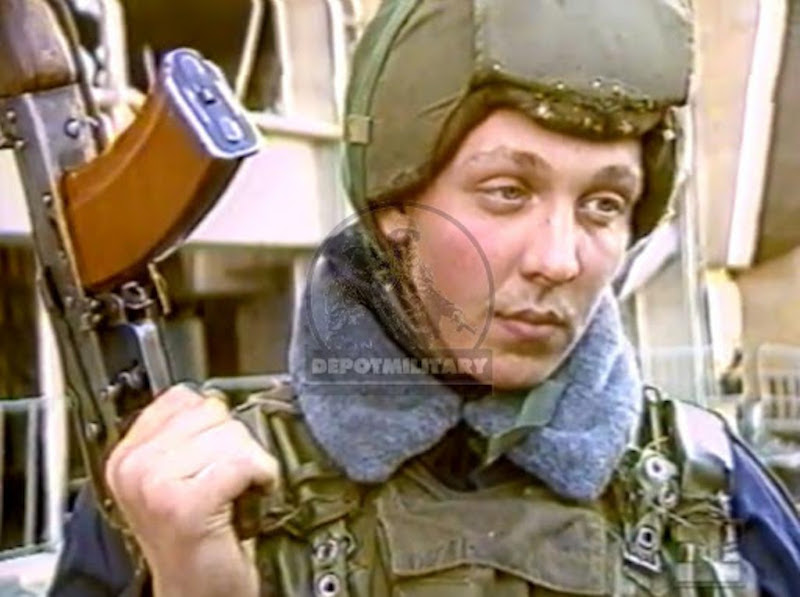
Examples of use, some from the time of the Chechen War. Beyond functionality, the helmet sometimes looks very funny because it resembles a placed ball.
SPARTANAT is the online magazine for Military News, Tactical Life, Gear & Reviews.
Send us your news: [email protected]
Ad
similar
Get the weekly SPARTANAT newsletter.
Your bonus: the free E-Book from SPARTANAT.


